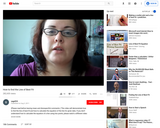
This is an instructional video demonstrating how to plot data to create a scatterplot and then find the correlation and equation of the line of best fit.
- Subject:
- Mathematics
- Material Type:
- Lecture
- Author:
- sage024
- Date Added:
- 12/10/2013

This is an instructional video demonstrating how to plot data to create a scatterplot and then find the correlation and equation of the line of best fit.

This tutorial shows users how to use standard and advanced search features to find resources on OER Commons.
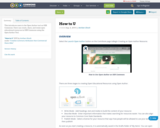
This introduces users to the Open Author tool on OER Commons. Users can create, share, and remix open educational resources in OER Commons using the Open Author Tool.
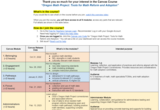
If you would like to see what’s in the course before you join, watch this overview video at the following URL: https://www.youtube.com/watch?v=J6Mj_xq29do.
When you join the course, you will have access to all 6 learning modules; access any parts that are relevant.
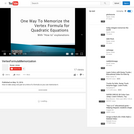
3-minute video about "Symbol Imagery" (taking a picture with your mind) and practice applying that to remember that the x-coordinate of the vertex of a parabola is -b/2a .

This video tutorial shows users how to create and manage groups on OER Commons, and how to share resources within those groups.
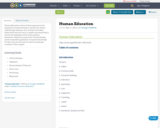
Human Education is about holistic approach in the preparation of human beings to educate the unborn child through adequate care, nutrition and safety, before birth and once born, to enable a growing being to survive the challenges of life as they present themselves. Subjects are geared for critical thinking and for immediate application of acquired knowledge for their own survival, and not only for acquiring a certificate. This is urgent.
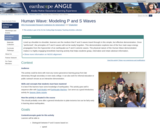
Lined up shoulder-to-shoulder, learners are the medium that P and S waves travel through in this simple, but effective demonstration. Once "performed", the principles of P and S waves will not be easily forgotten. This demonstration explores two of the four main ways energy propagates from the hypocenter of an earthquake as P and S seismic waves. The physical nature of the Human Wave demonstration makes it a highly engaging kinesthetic learning activity that helps students grasp, internalize and retain abstract information.
(Note: this resource was added to OER Commons as part of a batch upload of over 2,200 records. If you notice an issue with the quality of the metadata, please let us know by using the 'report' button and we will flag it for consideration.)

An introduction and examples of how to use statistical hypothesis testing, introducing the five steps in the significance test: 1. Assumptions 2. Hypothesis and signifincance level 3. Test Statistic 4. P-value 5. Conclusion
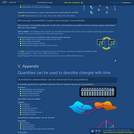
In the first video segment, we present a cartoon model of a weighted chain, which can be regarded as an approximation for a polymer under tension (e.g. a strand of DNA being stretched out using optical tweezers). The Hamiltonian and partition function for this system are described in the second segment. Finally, in the third segment, we calculate the average energy and elongation of the chain.

In this activity, learners explore the size and scale of the universe by shrinking cosmic scale in 4 steps, zooming out from the realm of the Earth and Moon to the realm of the galaxies. This informational brochure was designed as a follow-up take-home activity for teen and adult audiences. It can follow informal education activities where participants have experienced related space science programming. This activity allows participants to explore ideas of size and scale in the universe at their own pace.

The ratio of a circle's circumference to its diameter is always the same: 3.14159... and on and on (literally!) forever. This irrational number, pi, has an infinite number of digits, so we'll never figure out its exact value no matter how close we seem to get. Reynaldo Lopes explains pi's vast applications to the study of music, financial models, and even the density of the universe.

These exercises are originally part of the KLaSS module developed by King's College London Library Services to provide information literacy e-learning to students across our faculties. They were built and developed with Adobe Captivate 9 and published in HTML5 format, suitable for use with Moodle.This set of exercises is designed to provide information literacy support to students in the Faculty of Natural & Mathematical Sciences, which encompasses subjects like Informatics, Computer Science, Mathematics and Geography. The database used to demonstrate the principles is Web of Science, a broad resource holding literature on a wide variety of STEM subjects.The lessons cover the following topics:Planning an effective literature search - how to focus a research question and identify its key topics and componentsFinding literature - how to use different search techniques like truncation in Web of ScienceFinding full text articles in Web of Science - how to use the SFX system to look up the full texts of search results, and what to do if you don't immediately get accessWeb of Science Search Tips - using slightly more advanced techniques to run better searches, like using phrase searchingCombining searches in Web of Science - how to use AND & OR to broaden and refine seaches in Web of Science to retrieve relevant articles and informationFiltering search results in Web of Science - how to use Web of Science's filtering options to futhere refine results and exclude irrelevant articlesEach topic has a demonstration video, narrated by the author Tom Edge.The exercises have been published in HTML5 format so they should be compatible with any modern LMS. The authors have only used these files in Moodle 3.0, so cannot offer support for another LMS.
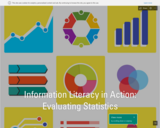
Can we really trust statistics? This post outlines suggestions for evaluating statistics.

For many adult students, positive and negative integers are an example of when math “keeps changing the rules.” This is the fifth of six lessons guiding students in constructing the abstract concepts necessary to understand adding positive and negative integers.
This lesson will review previous knowledge about negative numbers and teach adding integers with different signs. This is a time when it’s important to stress to students that understanding this lesson will help them in many future lessons.

This lesson will be the first of six lessons guiding students in constructing the abstract concepts necessary to understand adding positive and negative integers.
It is designed for adult learners (or middle school or older) who are not fluent with using numbers.
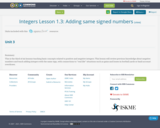
This is the third of six lessons teaching basic concepts related to positive and negative integers. This lesson will review previous knowledge about negative numbers and teach adding integers with the same sign, with connections to “real life” situations such as gains and losses in football yards or bank account overdraws.
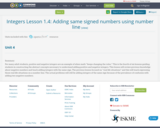
For many adult students, positive and negative integers are an example of when math “keeps changing the rules.” This is the fourth of six lessons guiding students in constructing the abstract concepts necessary to understand adding positive and negative integers.
This lesson will review previous knowledge about negative numbers and teach adding integers with the same sign. The previous lesson focused on “real life situations” and this will teach expressing those real life situations on a number line. The actual problems will still be adding integers of the same sign because of the prevalence of confusion with adding two negative numbers.
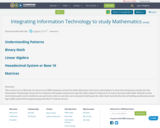
This course is is a collection of resources on OER Commons curated for Adult Education instructors and students to show the integration of math into the Information Technology Career Sector. Students will analyze and practice specific skills related to being in IT as well as develop math skills. Modules in this curriculum guide can be studied in any particular order as one does not necessarily build upon the other. Each includes the idea of building mathematical and logic skills required for programming and other IT related careers.
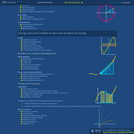
In this video, we become familiar with integrals, both by understanding them as sums of areas under plots of functions, and by understanding them as anti-derivatives. We present the u-substitution rule, which is the analog of the chain rule for differentiating composite functions.